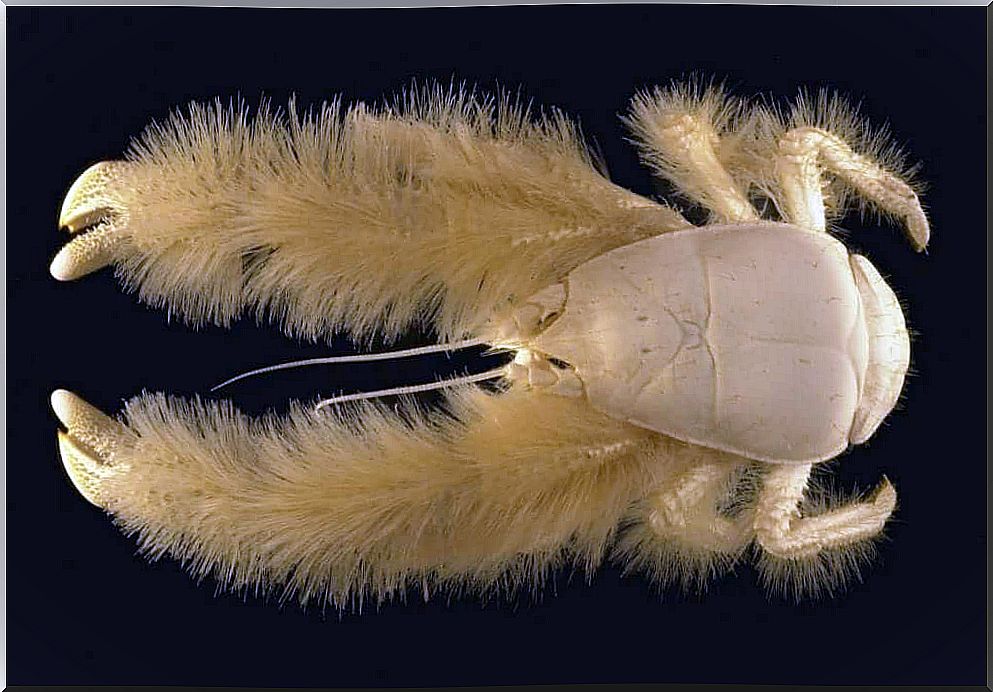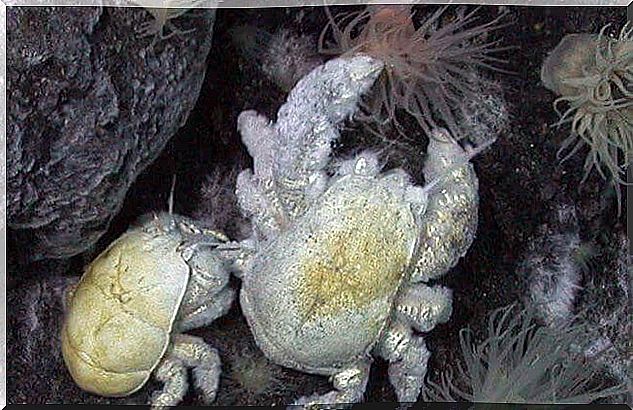Yeti Crab: Customs And Curiosities

By looking at the image of this crustacean, we can understand why it received its name from the famous “Snowman”. The yeti crab’s appearance is gruesome, and besides, it’s a large size (not as big as the character in the legend). Find out about it in this article.
Discovery and name of the yeti crab
This curious animal was discovered in 2006 at more than 2,000 meters deep in the South Pacific – near Easter Island – thanks to an expedition organized by MBARI: Monterey Bay Aquarium Research Institute (Monterey Bay Aquarium Research Institute) .
Both the scientific and the “popular” names of this species of decapod crustacean draw our attention. The researchers who discovered the yeti crab named it Kiwa hirsuta , in honor of the goddess Kiwa, belonging to Polynesian mythology.
It is worth noting that Kiwa is also the god of the sea according to the Maori tribes of New Zealand. On the other hand, “hirsuta” means “hairy” in Latin.
The second name by which this animal is known is the Yeti Crab, and this is due to its physiognomy and its light color ( some claim that it is an albino species ). A clear allusion was made to the famous “snowman” of the legends that frightened us when we were children.

At the time of its discovery, it was the only species of the genus Kiwaidae , but soon after they found a “familiar” they called Kiwa puravida , about which there is still not much information.
Main features
For the time being, there is little data we have on the yeti crab, apart from some physical characteristics and habits.
To start with, it is known that it lives in basaltic zones surrounded by hydrothermal vents and that it is an omnivorous species – that is, it eats animals and plants. It has no eyes, but it can move smoothly through the dark marine depths thanks to its “fur” and its pincers.
With its ends extended, this white-colored, silk-covered crab can reach six inches (it is much larger than other crustaceans).

The Yeti Crab and its Bacteria
The relationship he maintains with bacteria has not gone unnoticed by researchers. This is due to the fact that their fur or silks are covered with colonies of micro-organisms. Apparently, there is a very interesting symbiosis between the crab and these individuals.
One of the theories about this relationship is that, due to the fact that this crustacean lives in hydrothermal zones, it accumulates a good amount of minerals and harmful chemicals, which are consumed by bacteria. In this way, the crab detoxifies itself and the microorganisms feed.
Another hypothesis lies in the fact that the Yeti Crab allows bacteria to live in its tweezers, so that when it lacks food, it has a source of food… in its own body!
Not much is known about this very strange species, but what we can certainly indicate is that once again nature surprises us.
Undoubtedly, the sea holds many secrets and mysteries that have not yet been revealed, and the yeti crab is one among many “natural treasures” that inhabit the waters and that our human thought cannot understand.









